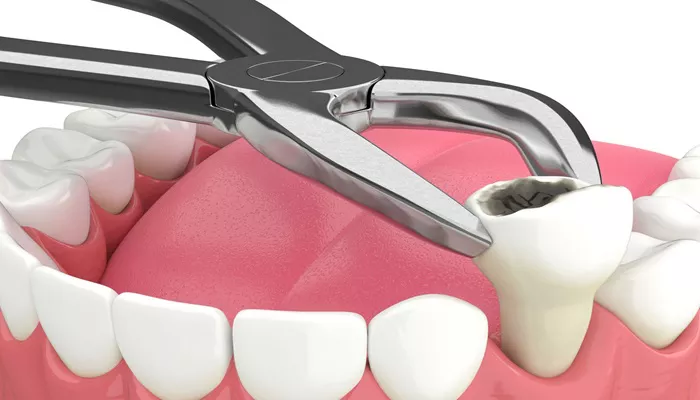Impacting occurs when a tooth fails to emerge properly from the gum line. This phenomenon can affect any tooth but is most commonly seen with wisdom teeth. When a tooth is impacted, it remains trapped within the jawbone or under the gum tissue, unable to fully erupt into its proper position. Impacted teeth can lead to various dental complications and often prompt the need for removal.
This article delves into the reasons why impacted teeth might need to be extracted, the potential complications they can cause, and the factors that influence the decision to remove them.
What Are Impacted Teeth?
Impactation occurs when a tooth cannot fully erupt due to physical obstruction or lack of space. This condition can manifest in several ways:
Wisdom Teeth (Third Molars): The most common impacted teeth are the wisdom teeth, which usually emerge in late adolescence or early adulthood. These teeth often lack sufficient space to come through properly and may become impacted.
Canines (Cuspid Teeth): Impacted canines are less common but can occur, especially when there is a lack of space or if the tooth develops in an unusual position.
Premolars and Molars: While less common, premolars and molars can also become impacted due to developmental issues or space constraints.
SEE ALSO: Can Your Wisdom Teeth Come In at 30?
Reasons for Impacted Teeth Extraction
The decision to remove an impacted tooth depends on several factors:
Prevention of Complications: Impacted teeth can lead to various dental problems, including:
1. Infection: Impacted teeth can create pockets where bacteria can accumulate, leading to infections such as pericoronitis, which is an infection of the gum tissue surrounding the impacted tooth.
2. Cysts and Tumors: Impacted teeth may cause the formation of cysts or tumors within the jawbone. These cysts can damage adjacent teeth and bone structure.
3. Damage to Adjacent Teeth: An impacted tooth can put pressure on neighboring teeth, potentially causing damage or misalignment.
4. Decay and Gum Disease: The difficulty in cleaning an impacted tooth can lead to decay and gum disease, which can spread to other teeth and affect overall oral health.
5. Pain and Discomfort: Impacted teeth can cause significant discomfort or pain, particularly if they are partially erupted or cause pressure on surrounding structures. Removal may be necessary to alleviate these symptoms.
6. Orthodontic Considerations: For individuals undergoing orthodontic treatment, impacted teeth can obstruct the alignment of other teeth. Extracting the impacted tooth can help facilitate the proper alignment of teeth and achieve better orthodontic results.
7. Growth and Development Issues: In some cases, impacted teeth may affect the growth and development of the jawbone.
Removing the impacted tooth can prevent further developmental issues and ensure proper alignment of the remaining teeth.
Assessment And Diagnosis
Determining whether an impacted tooth needs to be removed involves a thorough examination, including:
Clinical Examination: The dentist will examine the oral cavity and assess the position of the impacted tooth. Symptoms such as swelling, pain, or infection will be evaluated.
Radiographic Imaging: X-rays or other imaging techniques are essential for visualizing the position of the impacted tooth within the jawbone. These images help assess the extent of impaction and any potential damage to adjacent structures.
Patient History: The dentist will consider the patient’s medical history, symptoms, and any previous dental issues. This information helps determine the appropriate treatment plan.
Surgical Considerations
If removal of the impacted tooth is deemed necessary, several factors will influence the surgical approach:
Position and Depth: The position of the impacted tooth within the jawbone will affect the complexity of the extraction.
Teeth that are deeply impacted may require more extensive surgical procedures.
Anesthesia: The procedure can be performed under local anesthesia, sedation, or general anesthesia, depending on the complexity of the extraction and the patient’s comfort level.
Postoperative Care: After the extraction, proper care is crucial for healing and recovery. The dentist will provide instructions on managing pain, preventing infection, and maintaining oral hygiene during the healing process.
Alternatives to Extraction
In some cases, it may be possible to manage impacted teeth without extraction, particularly if:
The Tooth Is Asymptomatic: If the impacted tooth does not cause pain, discomfort, or complications, the dentist may recommend monitoring it over time.
There Is Sufficient Space: If there is enough space for the tooth to potentially emerge properly or if it poses no significant risk to surrounding structures, extraction may not be immediately necessary.
Orthodontic Treatment: In some cases, orthodontic treatment may be employed to guide the impacted tooth into its proper position, avoiding the need for extraction.
Conclusion
The decision to remove an impacted tooth is based on various factors, including the potential for complications, pain, orthodontic considerations, and overall oral health. Regular dental check-ups and radiographic assessments play a crucial role in identifying and managing impacted teeth. If an impacted tooth is causing problems or poses a risk to oral health, extraction may be the best course of action to prevent further issues and maintain overall dental well-being.

